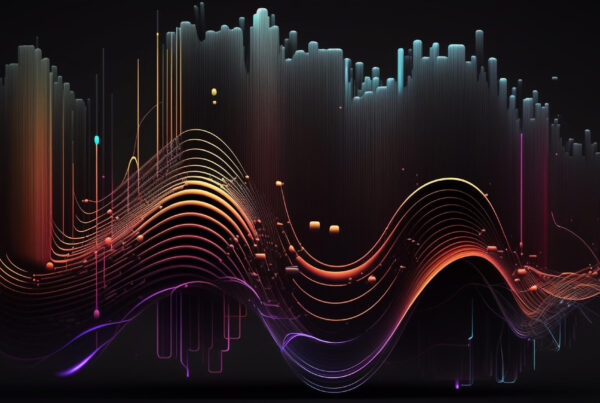3D rendering is a process that involves creating a two-dimensional image or animation from a three-dimensional model. This is done using computer software that can simulate light, shadows, textures and other visual effects to create a realistic or artistic representation of a scene or object. 3D rendering is used in a wide variety of fields, including film, games, architecture, design and more.

An overview of 3D rendering
3D rendering can be divided into three main categories: still images, movies and real-time 3D. Each of these categories has its own unique applications and technical requirements.
Still images are static representations of a 3D scene. These are often used in architecture and design to showcase buildings, products or interiors before they are actually built or manufactured. The process involves creating a detailed 3D model and then using rendering software to generate a high-resolution image showing what the final product will look like.
Film uses 3D rendering to create animated sequences. In the film industry, 3D rendering is used to create visual effects, animated characters and entire environments that would be impossible or too expensive to film in real life. This requires a huge amount of computing power and time, as each frame of a movie must be rendered individually.
Real-time 3D is a technology where 3D images are generated and dynamically updated in real time. This is mainly used in games and interactive applications where the user can influence or interact with the scene in some way. Real-time 3D rendering is much more demanding as it needs to render images fast enough to create a smooth and responsive experience.

From CAD to Mesh
An important aspect of 3D rendering is converting computer-aided design (CAD) files into a format that can be used for rendering. CAD files contain highly detailed and accurate models that are ideal for manufacturing and engineering, but they are often too complex to render directly.
To convert a CAD model into a renderable mesh, you start by simplifying the geometry. This means reducing the number of polygons (the basic building blocks of a 3D model) while retaining as much of the original detail as possible. This process is called ‘decimation’ or ‘retopology’.
Once the model has been reduced to a manageable level, it is exported to a mesh format, such as OBJ or FBX. These formats are more suitable for rendering as they are easier to process and render.
Optimization for the Web
Optimizing 3D models for the web means striking a balance between detail and performance. As browsers do not have the same processing power as dedicated rendering workstations or game consoles, it is important that models are as light as possible.
A common technique to optimize 3D models for the web is to use Levels of Detail (LOD). This involves creating multiple versions of the model with different levels of detail and then dynamically selecting the correct version based on how far away the model is from the camera. This reduces the amount of data that needs to be rendered and improves performance.
Another important aspect is to use effective texture formats and materials. Textures should be compressed to reduce file size and speed up loading times. PBR (Physically-Based Rendering) materials are often used to create realistic surfaces by simulating how light interacts with different materials.
 Photorealistic materials
Photorealistic materials
To create photorealistic 3D rendered images, it is important to use advanced materials and textures. PBR materials have become the standard in 3D rendering because they mimic how light actually behaves in real life.
PBR materials consist of several layers that simulate different properties of a material, such as its glossiness, how much light it absorbs and how it reflects light. By using high-quality textures and carefully adjusted material settings, you can create highly realistic 3D models that look as if they were photographed.

Real-time 3D rendering in the browser
Real-time 3D rendering on the web has become increasingly common thanks to advances in browser technologies such as WebGL. WebGL is an API that allows 3D graphics to be rendered directly in the browser without the need for any plug-ins.
WebGL allows developers to create interactive 3D experiences that can be accessed by anyone with a modern browser. This has opened up new opportunities in e-commerce, education, gaming and much more. For example, customers can customize products in real time before they buy them, or students can explore complex scientific models directly in their browser.
For real-time 3D to work well on the web, models need to be optimized and rendering techniques such as level of detail (LOD) and frustum culling need to be used. These techniques ensure that only the parts of the scene that are actually visible on the screen are rendered, saving computing power and improving performance.
Why Realtime 3D is More Effective than Rendered Film
One of the main advantages of real-time 3D is its interactivity. Unlike 3D rendered film, which is a predetermined sequence of images, real-time 3D allows users to interact with the scene and make changes in real time. This creates a more engaging and dynamic experience.
Real-time 3D is also much more cost-effective for some applications. Rendering a movie can take hours or even days depending on the complexity, while real-time 3D can generate images in milliseconds. This makes it possible to use 3D rendering in applications where fast feedback is crucial, such as games or interactive design tools.
In addition, real-time 3D is more customizable. Because scenes are rendered dynamically, they can be changed and updated without having to be rendered from scratch. This makes it easier to make changes and improvements based on user interactions or feedback.

3D rendering is a powerful technology used in many different fields, from movies and games to architecture and design. By converting CAD files into mesh models and optimizing them for the web, developers can create realistic and engaging 3D experiences that can be accessed by anyone with a web browser. Photorealistic materials and advanced rendering techniques like PBR help create models that look incredibly lifelike.
Real-time 3D rendering on the web offers unique advantages over traditional rendered film, including interactivity, cost-effectiveness and flexibility. As the technology continues to evolve, we are likely to see even more innovative applications for 3D rendering that improve the way we see and interact with the digital world.






